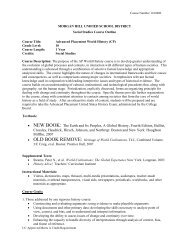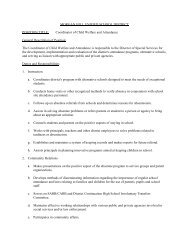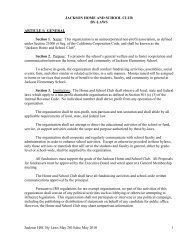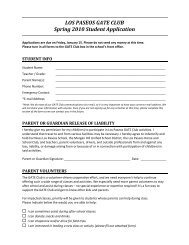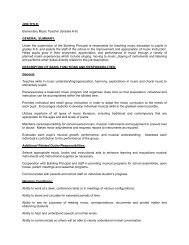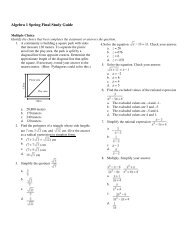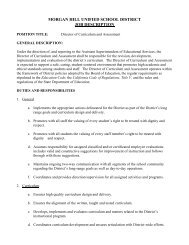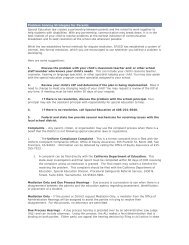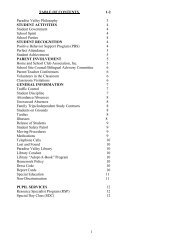8th Grade US History
8th Grade US History
8th Grade US History
Create successful ePaper yourself
Turn your PDF publications into a flip-book with our unique Google optimized e-Paper software.
• The Texas War for Independence and the Mexican-American War (i.e., territorial settlements, theaftermath of the wars and the effect on the lives of Americans, including Mexican-Americanstoday).Slavery and its Abolishment• The leaders of the movement (e.g., biographies and other literature on John Quincy Adams andhis proposed constitutional amendment, John Brown and the armed resistance, Harriet Tubmanand the underground railroad, Benjamin Franklin, Theodore Weld, William Lloyd Garrison,Frederick Douglass) the slavery issue as raised by the annexation of Texas and the effect ofCalifornia coming into the union as a free state as part of the Compromise of 1850.• The significance of the States’ Rights to Doctrine, Missouri Compromise (1820), Wilmot Proviso(1846), the Compromise of 1850, Henry Clay’s role in the Missouri Compromise and theCompromise of 1850, the Kansas-Nebraska Act (1854), Dred Scott v. Sanford (1857), and theLincoln Douglas debates (1858).Civil War• The boundaries constituting “the North” and “the South”, the geological differences between thetwo regions, and the differences between agrarians and industrialists.• Abraham Lincoln’s presidency and his significant writings and speeches and their relationship tothe Declaration of Independence such as his “House Divided” speech (1858), the GettysburgAddress (1863), the Emancipation Proclamation (1863), his inaugural addresses (1861 and 1865).• The views and lives of leaders and soldiers on both sides of the war, including black soldiers andregiments (e.g., biographies of Ulysses S. Grant, Jefferson Davis, Robert E. Lee).• Critical developments in the war, including the major battles, geographical advantages andobstacles, technological advances, and Lee’s surrender at Appomattox how the war affectedcombatants, with the largest death toll of any war in American history, and the physicaldevastation, the effect on civilians, and the effect on future warfare.Reconstruction• The political aims of Reconstruction and the effects on the political and social structure ofdifferent regions.• The effects of the Freedman’s Bureau and the restrictions on the rights and opportunities offreedman, including racial segregation and “Jim Crow” laws the rise and effects of the Ku KluxKlan.• The thirteenth, fourteenth, and fifteenth amendments to the Constitution, and their connection tothe Reconstruction.Industrial Revolution• The reasons for the development of federal Indian policy and the Plains wars with AmericanIndians and their relationship to agricultural development and industrialization.• How states and the federal government encouraged business expansion through tariffs, banking,land grants, and subsidies.• Entrepreneurs, industrialists, and bankers in politics, commerce and industry (e.g., AndrewCarnegie, John D. Rockefeller, Leland Stanford).• The location and effects of urbanization, renewed immigration, and industrialization (e.g., effectson social fabrics of cities, wealth and economic opportunity, and the conservation movement).• Child labor, working conditions, laissez-faire policies toward big business and the leaders of (e.g.,Samuel Gompers) and the rise of the labor movement, including collective bargaining, strikes,and protests over labor conditions.



